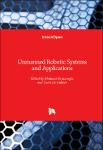Search
Author
- Geer, De Cubber (1)
- Mahmu, Reyhanoglu (1)
- Moises, Rivas López (1)
- Taha, Selim Ustun (1)
- next >
Subject
- Automatic control engi... (1)
- Hệ thống điện (1)
- Robotics (1)
- Rô bốt (1)
- next >
Date issued
Has File(s)
- true (3)
Search Results
This book presents recent studies of unmanned robotic systems and their applications. With its five chapters, the book brings together important contributions from renowned international researchers. Unmanned autonomous robots are ideal candidates for applications such as rescue missions, especially in areas that are difficult to access. Swarm robotics (multiple robots working together) is another exciting application of the unmanned robotics systems, for example, coordinated search by an interconnected group of moving robots for the purpose of finding a source of hazardous emissions. These robots can behave like individuals working in a group without a centralized control. |
The need to be tolerant to changes in the control systems or in the operational environment of systems subject to unknown disturbances has generated new control methods that are able to deal with the non-parametrized disturbances of systems, without adapting itself to the system uncertainty but rather providing stability in the presence of errors bound in a model. With this approach in mind and with the intention to exemplify robust control applications, this book includes selected chapters that describe models of H-infinity loop, robust stability and uncertainty, among others. Each robust control method and model discussed in this book is illustrated by a relevant example that serves as an overview of the theoretical and practical method in robust control. |
Proliferation of distributed generation and the increased ability to monitor different parts of the electrical grid offer unprecedented opportunities for consumers and grid operators. Energy can be generated near the consumption points, which decreases transmission burdens and novel control schemes can be utilized to operate the grid closer to its limits. In other words, the same infrastructure can be used at higher capacities thanks to increased efficiency. Also, new players are integrated into this grid such as smart meters with local control capabilities, electric vehicles that can act as mobile storage devices, and smart inverters that can provide auxiliary support. To achieve stable and safe operation, it is necessary to observe and coordinate all of these components in the sma... |



